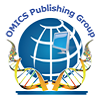Our Group organises 3000+ Global Conferenceseries Events every year across USA, Europe & Asia with support from 1000 more scientific Societies and Publishes 700+ Open Access Journals which contains over 50000 eminent personalities, reputed scientists as editorial board members.
Open Access Journals gaining more Readers and Citations
700 Journals and 15,000,000 Readers Each Journal is getting 25,000+ Readers
Indexed In
- Google Scholar
- RefSeek
- Hamdard University
Useful Links
Share This Page
Titanium truss structures as conduits for bone healing through multiplanar stress distribution
Lisa A Ferrara and Ali Kiapor
Abstract
Aim: The aim of this study was to develop a series of titanium scaffolds composed of multiplanar truss structures to assess structural integrity and stress distribution for orthopedic use. A comprehensive battery of mechanical tests and validated finite element models [FEA] were performed to determine the load bearing strength and endurance characteristics, as well as the stress profiles distributed throughout the truss structures under multiplanar loading. Methods: Static and dynamic fatigue tests of multiple truss structures with different strut diameters were conducted to measure the yield and ultimate strength and fatigue endurance load limits for multiple planes of physiological motion. FEA models were constructed and loading on each structure mimicked the actual mechanical testing, followed by a validation of each model with the actual test results. Once the models were validated, they were loaded in multiple planes to provide a profile of stress distribution throughout the truss structures. Results: Mechanical results of the truss structures exhibited yield and ultimate strength, stiffness, and fatigue endurance at loads of at least 10 to 15 times stronger than physiological loads in all planes of loading. The open architecture of the truss structure counteracted the high global stiffness measured by distributing stresses across a much greater surface area in multiaxial planes than that of traditional titanium implants, thus reducing the potential for stress risers at the bone interface. The FEA demonstrated stress transfer to truss units deep within the implant, as well as on the surfaces, for all planes of physiological loading. Conclusions: This study found the strength of the truss structure combined with its open architecture created an ideal scaffold that distributed multiplanar forces (stress) throughout the truss formations to all interfaces of the bone surrounding each strut. The end result is a mechanically sound structure with improved stress distribution to the superficial and deeper truss structures. This increased stress transfer is non-destructive to its mechanical integrity and will theoretically result in greater transfer of microstrain to the bone it contacts. Although not the topic of this abstract, an early in vivo animal study assessing bone fusion through these truss structures in sheep intervertebral discs found structurally sound remodeled bone at early time periods. These results potentially support this theory of stress-strain transfer to individual struts within truss structures, which lead to potentially earlier bone incorporation which may promote earlier global stabilization across a bone defect, resulting in augmented bone recruitment.Biography
Dr. Lisa Ferrara has been faculty at two prestigious academic medical centers and served as the director of the musculoskeletal research facilities. She has received numerous accolades, was involved with the Medical Device Advisory Committee to the FDA, and has provided consulting services about spinal disorders for ABC News. Dr. Ferrara is widely published, provides frequent lectures, serves on multiple scientific and medical advisory boards, and has recently been appointed as a board member to the Advisory Committee for Biotechnology in Southeastern North Carolina. Dr. Ferrara previously served as the Director of the Spine Research Laboratory in the Department of Neurosurgery and Orthopedics at The Cleveland Clinic with a research focus on musculoskeletal biomechanics and the development of implantable MEMS sensors for various biomedical applications. She was awarded the Whos Who Award in Technology in 1999, the NASS Award for Outstanding Research in 1995, and is the recent recipient of the Healthcare Entrepreneur of the Year Award for Coastal North Carolina.

 Spanish
Spanish  Chinese
Chinese  Russian
Russian  German
German  French
French  Japanese
Japanese  Portuguese
Portuguese  Hindi
Hindi